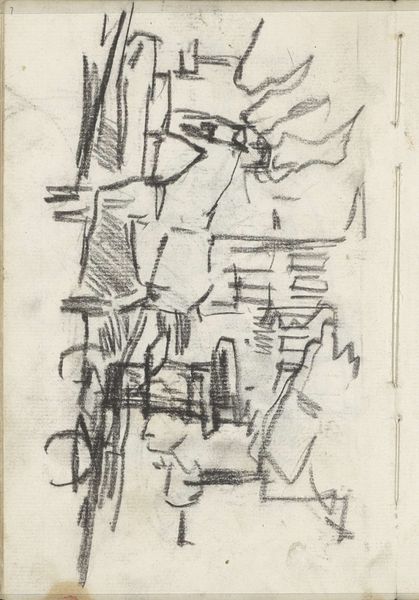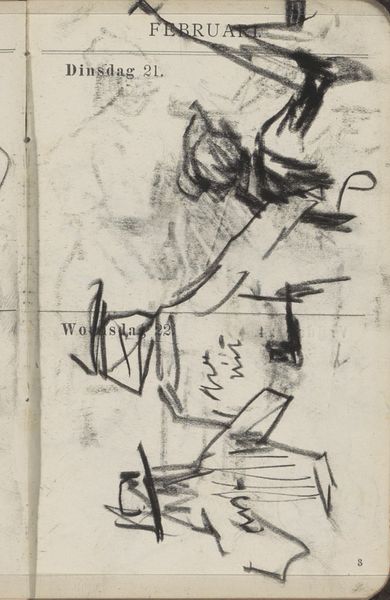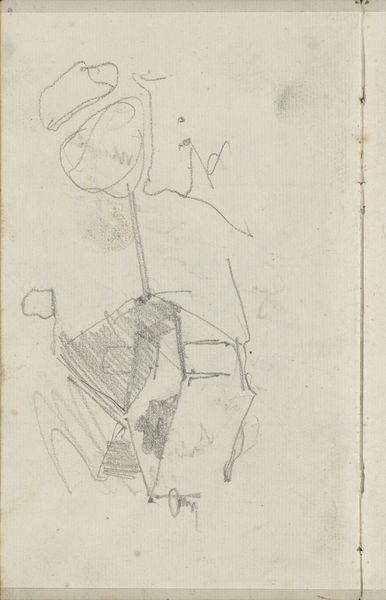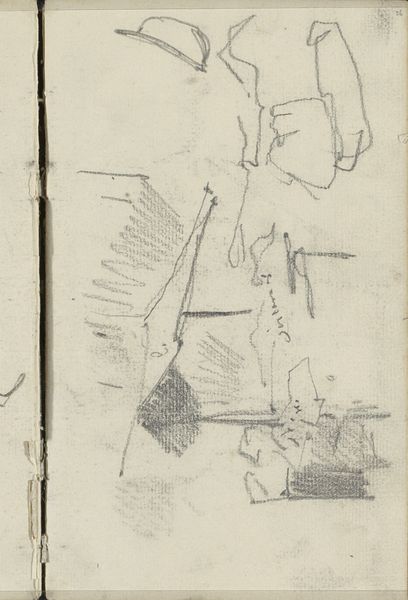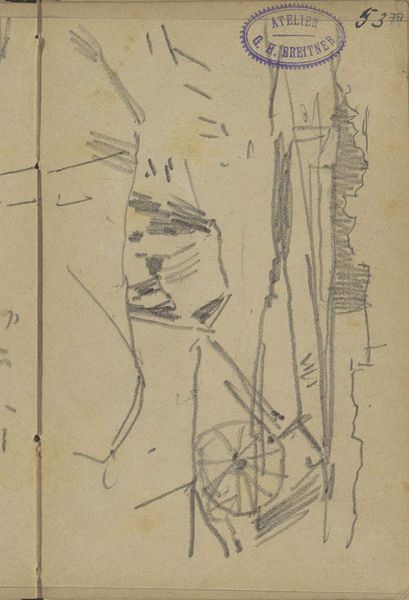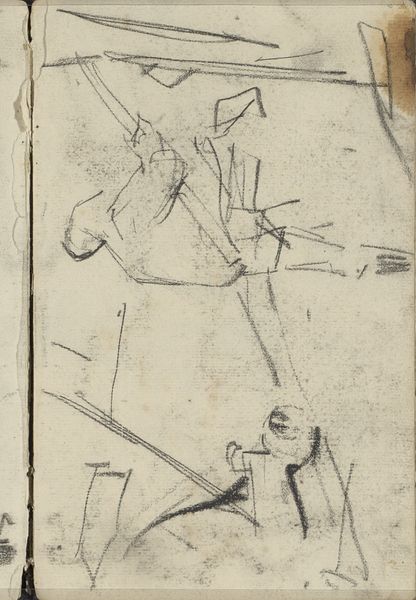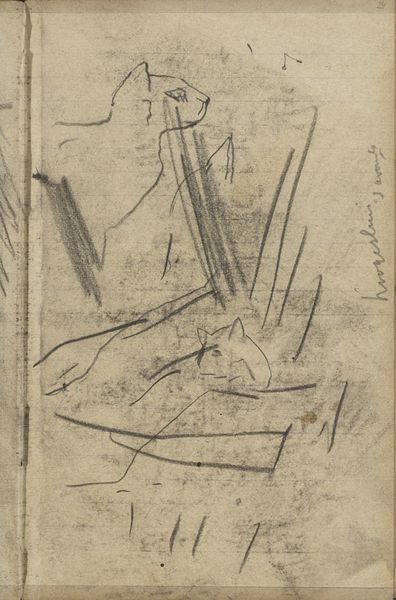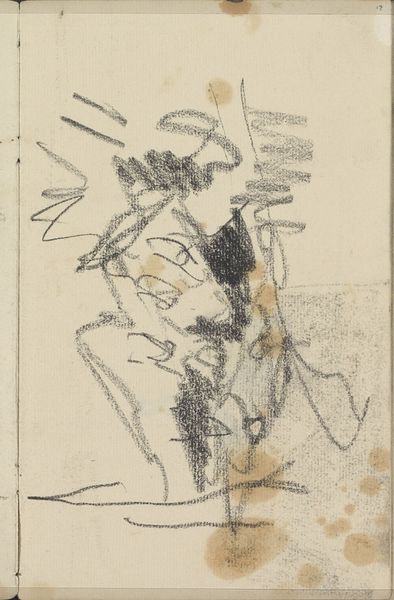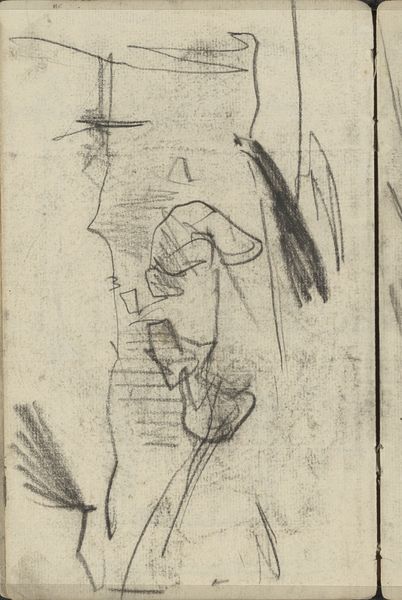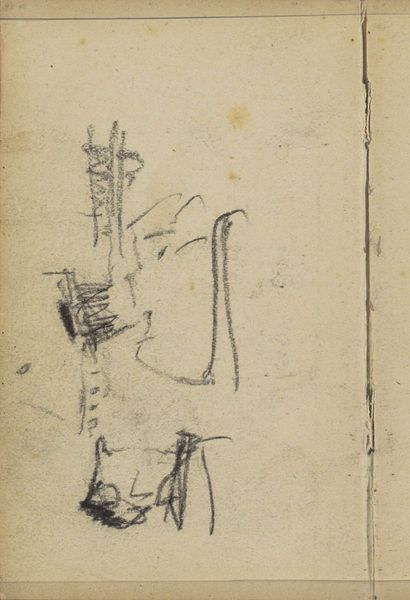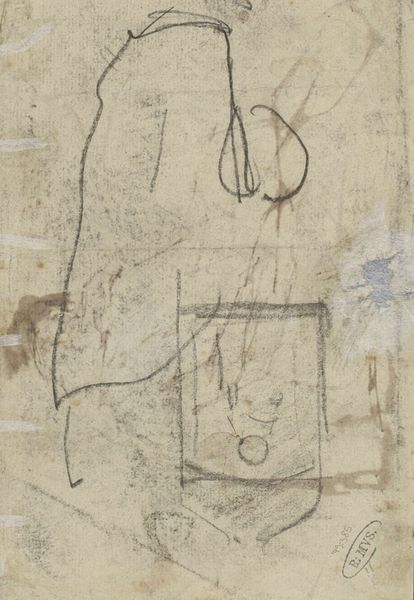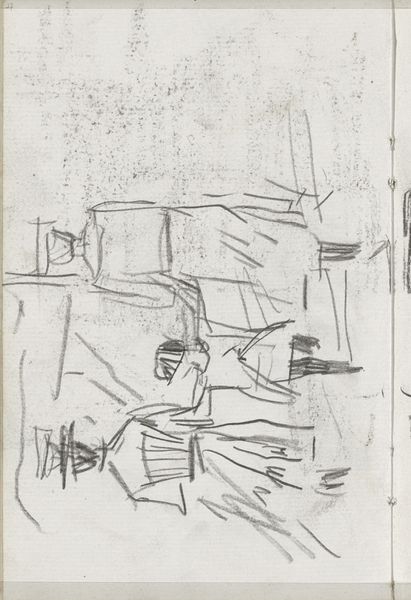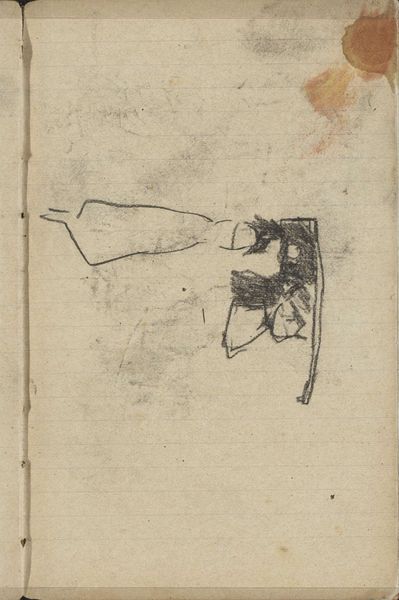
Copyright: Rijks Museum: Open Domain
Curator: Standing before us is George Hendrik Breitner's "Figuurstudies," a drawing created in 1893 and currently held in the collection of the Rijksmuseum. Editor: It feels…incomplete, but compelling. Like a fleeting memory sketched on the fly. There's a raw immediacy to the lines. Curator: Indeed. Observe how Breitner uses a spare pen and ink, plus perhaps some charcoal, on toned paper to create the forms. It appears to be a page torn straight from a sketchbook, given the inscription that looks like "Februari", possibly from a diary. The light pencil work lends a certain…ephemeral quality. Editor: The figures themselves—their faces are obscured, but the gestures, the clothing, evoke a certain type of…urban dweller, perhaps? The hats and loosely defined garments point to the period. They appear quickly rendered, almost as stereotypes rather than as unique portraits, capturing only what would stand out the most to a hurried eye. Curator: Perhaps the anonymity contributes to their symbolic weight. These figures are everyman, everywoman – reflections of the bustling urban life Breitner often depicted. The rapid, almost chaotic linework reinforces this idea of constant motion, the fleeting nature of city existence. Note how some marks become pure texture instead of descriptive forms, adding to that vibrant chaos. Editor: Do you think the obscured faces are intentional? Is Breitner commenting on the loss of identity within the rapidly growing cities of the time? Curator: That's a viable interpretation. The symbol of facelessness can suggest alienation, or the de-individualization that modernity arguably brings. Also, recall the artistic climate then; impressionism thrived, with its loose interpretations, along with new psychological approaches to portraiture. It allows us to see a more generalized impression of people within that landscape, not only individual likenesses, which makes us want to ask what that landscape must have been like for the artist. Editor: Yes, it captures a specific moment and feeling. Well, looking closely has provided some rich symbolic and structural clues. I will always see sketchbooks in museums differently now. Curator: Absolutely. By dissecting both the form and implied meaning, we gain richer understanding of this fascinating work, capturing a historical zeitgeist with what, at first, seems a set of raw lines on toned paper.
Comments
No comments
Be the first to comment and join the conversation on the ultimate creative platform.
